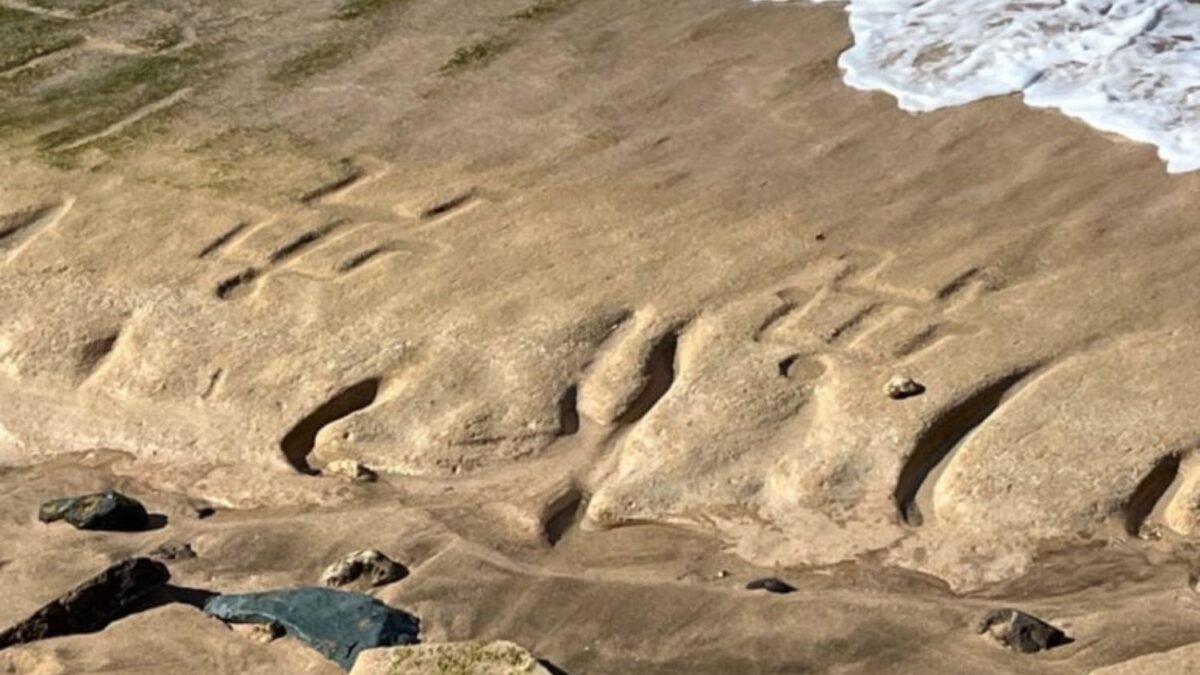Mysterious Petroglyphs Resurface on Oahu’s Beach!

The sand movement has once again uncovered the mysterious petroglyphs that can be found on the shores of a remote group of islands. Depending on the ocean currents, these stone figures can either appear or disappear, sometimes remaining hidden for years before resurfacing almost magically.
But this is no sign from the heavens, nor is it a scene from a fantasy movie. These petroglyphs are carved on sandstone along a beach on the west coast of Oahu, right in front of a U.S. Army recreation center. They could be more than 1,000 years old, as reported at the time.
There are a total of 26 carved images, mostly depicting simple human figures, as stated by experts. The largest petroglyph stands at 2.4 meters tall and is nearly as wide. Two of the figures even have fingers. The periodic emergence of these carvings is controlled by the natural movements of the waves and ocean currents, which shift sand and sediments along the beach.
A Serendipitous Discovery
In 2016, two guests staying at the recreation center stumbled upon the petroglyphs. Experts are still uncertain about the meaning and age of these carvings, but there is an archaeological site nearby dating back approximately 600 years. Glen Kila, a local expert in Hawaiian culture and history, believes that the reappearance of the petroglyphs is a message from his ancestors.
“It’s a warning to the community about the rising ocean levels,” Kila shared with ABC News, emphasizing his ancestral ties to the coastal Hawaiian people. During a 2017 interview with the U.S. Army, Kila mentioned interpreting one of the human figures as the demigod Maui, a mischievous hero with magical abilities from Polynesian mythology, famously portrayed by Dwayne Johnson in Disney’s Moana.

“Considering his role in our moolelos here, and noting that the fingers point eastward, like the rising sun towards the sunset, it’s a religious symbol,” Kila explained. “It’s akin to Christian symbols like the cross”. Mo’olelo, a Hawaiian term, encompasses various meanings such as narratives, stories, myths, history, tradition, and literature.
The Hawaiian Islands were among the last places on Earth to be populated by humans. The earliest inhabitants were the Polynesians, believed to have arrived around 300 AD. Despite lacking a written language, metals, ceramics, or livestock, these natives were skilled artisans in wood, stone, bone, and shell crafting. They constructed large canoes and passed down their rich cultural heritage orally from one generation to the next. Petroglyphs served as visual aids for oral storytelling.
British explorer Captain James Cook reached Hawaii in 1778, and after more than a century of increasing Western influence, the Hawaiian monarchy was overthrown by U.S. and European businessmen with U.S. military support. President William McKinley annexed the territory in 1900.
Only time will tell when these petroglyphs will once again be buried under the sand. Given the current state of affairs, it’s possible that Kila’s ancestors are cautioning us about a range of environmental and geopolitical errors.
This article has been translated from Gizmodo US by Lucas Handley. You can find the original version.






